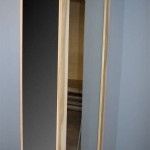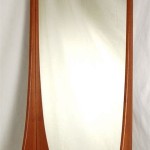How Do You Remove a Large Mirror From a Bathroom Wall?
Removing a large, heavy mirror from a bathroom wall can be a daunting task. It requires careful planning and execution to prevent injury and damage to both the mirror and the wall. This article outlines the necessary steps and precautions to safely and effectively remove a large bathroom mirror.
Assessing the Situation
Before beginning the removal process, it is crucial to assess the mirror's installation method. Understanding how the mirror is attached to the wall dictates the appropriate removal techniques. Common attachment methods include adhesive, clips, and a combination of both. Examining the mirror's edges and back for screws, clips, or adhesive residue will provide valuable insights.
Gathering Necessary Tools and Materials
Having the right tools and materials readily available streamlines the removal process and enhances safety. The following items are generally recommended: * Heavy-duty gloves * Safety glasses * Drop cloths or blankets * Putty knife or razor blade scraper * Suction cups * Duct tape * Pry bar (if necessary) * Hammer (if necessary) * Wire cutters (if necessary) * Assistance from another person (highly recommended for large mirrors)
Protecting the Surroundings
Protecting the bathroom surfaces and minimizing the potential for damage are essential preparatory steps. Covering the floor, countertops, and any nearby fixtures with drop cloths or blankets will safeguard them from falling glass shards or dropped tools. Furthermore, applying duct tape in a crisscross pattern across the mirror's surface can help contain glass fragments in case of breakage.
Removing Mirrors Attached with Clips
Mirrors secured with clips are generally easier to remove than those adhered with glue. The process typically involves locating the clips, often hidden behind decorative covers or along the mirror's edges. Once located, the clips can be carefully unscrewed or unclipped, allowing the mirror to be lifted away from the wall. Having an assistant to support the mirror during this process is highly recommended.
Removing Mirrors Attached with Adhesive
Removing mirrors attached with adhesive requires more intricate techniques. The adhesive must be weakened or broken to release the mirror from the wall. Here are several methods to consider: * Applying Heat: A heat gun or hairdryer can soften the adhesive, making it easier to separate the mirror from the wall. Care must be taken to avoid overheating the mirror, which could cause it to crack. * Using a Wire: A thin, strong wire, such as piano wire, can be worked behind the mirror to cut through the adhesive. This method requires patience and a steady hand. * Employing Solvents: Specialized adhesive removers can be used to dissolve the adhesive, but caution should be exercised as these solvents can damage certain wall surfaces. Always test in an inconspicuous area first.
Detaching the Mirror from the Wall
Once the clips are removed or the adhesive is sufficiently weakened, the mirror can be carefully detached from the wall. Suction cups can provide a secure grip and aid in the removal process. Slowly and steadily pulling the mirror away from the wall, starting at one edge and working across, is recommended. Having an assistant support the mirror’s weight is crucial, especially for larger, heavier mirrors.
Dealing with Stubborn Adhesives
If adhesive residue remains on the wall after the mirror is removed, a putty knife or razor blade scraper can be used to carefully remove it. Applying heat to the adhesive may also facilitate its removal. For stubborn residue, specialized adhesive removers may be necessary, but again, exercise caution and test in an inconspicuous area first.
Disposing of the Mirror
Proper disposal of the old mirror is important to prevent injuries. Wrap the mirror in heavy-duty cardboard or blankets and secure it with tape. Label it clearly as "broken glass" or "mirror" to alert waste handlers. Check local regulations regarding bulky item disposal or recycling options for mirrors.
Repairing the Wall
After the mirror is removed, the wall may require repairs. Fill any holes left by screws or clips with spackling compound and sand smooth once dry. If necessary, repaint the wall to match the surrounding area.
Safety Precautions Throughout the Process
Maintaining safety throughout the entire mirror removal process is paramount. Always wear heavy-duty gloves and safety glasses to protect from sharp edges and potential glass shards. Working with an assistant is highly recommended, especially for large or heavy mirrors. If the mirror is exceptionally large or difficult to remove, consider consulting a professional glazier or handyman.

How To Remove A Bathroom Mirror Lowe S

How To Safely And Easily Remove A Large Bathroom Builder Mirror From The Wall Site Title

How To Safely And Easily Remove A Large Bathroom Builder Mirror From The Wall Site Title

How To Safely And Easily Remove A Large Bathroom Builder Mirror From The Wall Site Title

How To Safely And Easily Remove A Large Bathroom Builder Mirror From The Wall Site Title

How To Remove A Mirror Glued The Wall Forbes Home

How To Remove Mirror Off Wallsafely

How To Remove A Frameless Mirror Like Nervous Grandma

How To Safely And Easily Remove A Large Bathroom Builder Mirror From The Wall Site Title

How To Remove A Large Mirror That S Glued The Wall Emerging Home








